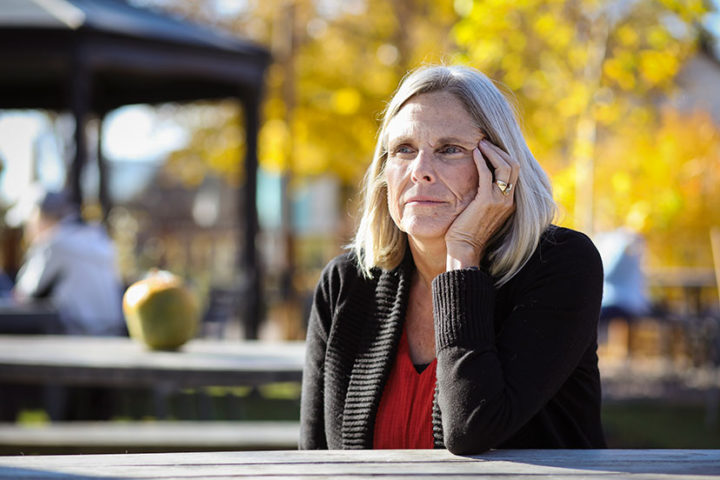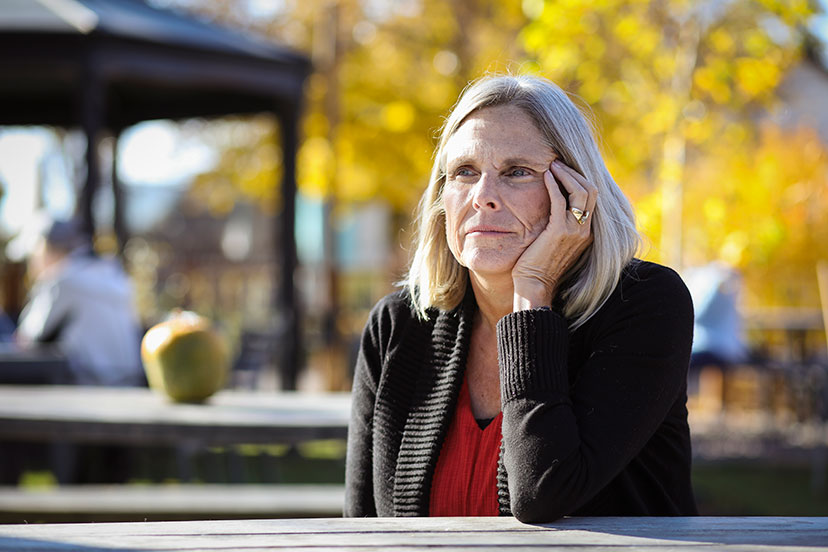By Susan Greene, Colorado News Collaborative.
This investigation is part of the ongoing “On Edge” series about Colorado’s mental health by the Colorado News Collaborative, the nonprofit that unites more than 160 communities and news outlets like ours to ensure quality news for all Coloradans.
A rainy day
Colorado Behavioral Healthcare Council, the centers’ trade group, represents them in negotiations with Colorado’s Department of Health Care Policy and Financing, which provides about two-thirds of their public funding through Medicaid, and with the Office of Behavioral Health, which provides approximately the remaining third through a complex web involving 18 state agencies and more than 75 programs. The state has handed the centers decades of automatic contract renewals despite long standing local concerns about their services.
Commissioners in most of Colorado’s 64 counties have over the years complained that their law enforcement and human service officials end up handling mental health crises when the centers fail to do so. Parents raise their hands at support group meetings to describe the desperation of having to send teenagers experiencing psychotic breaks across the state because there were no adolescent psychiatric beds open near them. Some people with severe depression are limited to two or three therapy appointments, but prescribed drugs indefinitely, with little follow-up.
State mental health officials have long been aware of these and other problems.
“The centers and the state have been failing people,” says Robert Werthwein, director of the Office of Behavioral Health, which will morph into the Behavioral Health Administration when the new department launches in July.
The Council – whose members pay an average $66,000 in dues annually – has, in the meantime, spent years lobbying and litigating to limit the number of independent contractors the state authorizes to receive Medicaid dollars.
“The centers pretty much have a corner on their local markets and don’t want competition,” says Byron Pelton, a Logan County commissioner and member of the state task force aiming to increase access to behavioral health care.
The Council also has pushed to preserve its members’ favored Medicaid reimbursement rate status with the state. The Mental Health Center of Denver receives $592 in Medicaid reimbursement for an hour of counseling, for example, compared to the $91 Medicaid pays an independent clinician for the same service. And the Denver center receives $818 for an hour of crisis intervention compared to the $47.50 an hour paid the private provider.
Those reimbursement rates are based on a formula – developed by the centers’ trade group in conjunction with the state – that divides a center’s overall expenses for any given year by the total number of services it provided the year prior. The higher a center’s spending and the lower the number of times it treats clients, the more money it will receive through Medicaid reimbursement. The methodology effectively creates an incentive for centers to be less efficient with their spending and to limit or even refuse clients care.
“It is hard to imagine how that formula is in the best interest of Coloradans, especially when there are so many people waiting for care,” says Nancy VanDeMark, former director of the Colorado Office of Behavioral Health who now works as a consultant.

North Range Behavioral Health in Greeley and Mental Health Center of Denver have the lowest and highest reimbursement rates among the 17 centers, respectively, according to cost reports submitted to the Department of Health Care Policy and Financing. Greeley charges Medicaid $228 for an hour of counseling compared to Denver’s $592 for an hour of the same service.
MHCD says it needs the higher rates to bankroll the array of programs the centers are required by contract to provide and to subsidize others that don’t make money, such as food pantries and homeless shelters.
Forrestal, the Council’s CEO, refused multiple requests for an interview. In a series of email exchanges she said comparing the centers’ reimbursement rates to those of independent Medicaid providers is unfair because centers offer a greater “depth and breadth” of services. Besides, she wrote, “Behavioral health has been significantly underfunded, and without (the Council’s) efforts to secure additional funding, there would be no new money for (the centers) to expand services or build new programs.”
The trade group recently hired the state’s assistant medicaid director, Laurel Karabatsos, as a consultant only months after she left the Department of Health Care Policy and Financing (HCPF), and she has been attending meetings with that agency about changing the future payment methodology. Karabatsos has not sought an opinion from the state’s Independent Ethics Commission about whether that job breaks the state’s revolving-door ethics law prohibiting state employees from taking jobs in industries they regulate, and HCPF sees no conflict of interest.
The centers have received far more public funding since Colorado enacted Medicaid expansion in 2013, and watchdogs say some are wasting it with inefficiencies and other questionable spending.
According to a cost report it filed with the state that serves as the basis for its reimbursement, the Aurora Mental Health Center spent 48 cents on administrative costs for every dollar it spent on care in 2020. That’s in sharp contrast to North Range Behavioral Health in Greeley – the most efficient of all the centers statewide – which in the same year, records show, spent 8 cents on administrative costs for every dollar spent on care.
Kelly Phillips-Henry, CEO of the Aurora center, attributes her vastly higher administrative costs partly to updating technology, including the systems required to convert to telehealth care.
Former state Human Services director Reggie Bicha long has frowned on an overuse of mental health funding for things rather than people. He points specifically to the aquaponics greenhouse at the Mental Health Center of Denver’s Dahlia campus, which recirculates water through fish tanks and garden beds.
“It’s a wonderful little concept,” he says. “But from an organization that was constantly saying they needed more financial resources, I wasn’t seeing nearly that kind of creativity put into fighting severe mental illness, reducing suicide rates, keeping people out of hospitals and jails and institutions.”
The $15.6 million Dahlia campus was funded partly through the center and private donations, but mainly through Denver Urban Renewal Authority bonds.
For the union representing workers at the Denver center, it is a sore point that CEO Carl Clark made $819,340 in 2020, including $331,583 in bonuses. That’s 10 times more than an average clinician there earns. Clark defends his earnings, noting his pay is set by his board, not by him.

He made upwards of two and a half times more than the $301,337 average total compensation for CEOs of community mental health centers in Colorado in 2020, our analysis of financial disclosures found.
The Denver center’s audited financial report also shows it sat on $41 million in liquid assets in 2020. Clark says his board likes to keep sizable reserves on hand as a “rainy-day fund.”
Since the pandemic hit in 2020, Denverites have faced the longest-ever wait times for care as pandemic-related depression and anxiety rates skyrocketed. And Denver’s is not the only center sitting on reserves. Nine others kept at least $10 million in liquid assets last year while their wait times also grew and the state plummeted to the bottom of national ranking for access to care.
“If the CMHCs are not willing to reinvest their reserves to expand access to care now, then when?” VanDeMark asks.
As the pandemic gripped Colorado in early 2020, the centers halted most of their services temporarily, then moved to telehealth. Yet, they still managed to treat more patients in that fiscal year ending in June 2020 than they did the following fiscal year when the statewide caseload dropped by 7,200.
The Council attributes the decline to what Forrestal calls a “dire behavioral health workforce crisis,” which she writes has left more than 1,000 job vacancies among its members.
“There simply is not enough workforce to meet demand.”
Union members counter that the center could retain more staff by raising salaries far more significantly than it has – and by using bonus pay for executives like Clark to do so.

